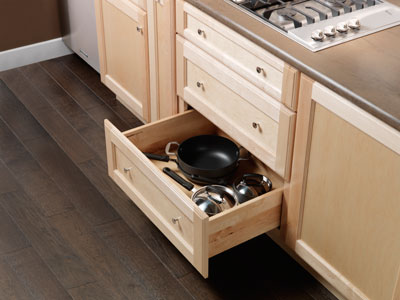 Available for decades from a couple of companies, brush sanding machines exploded onto the market about six to seven years ago from many different manufacturers. Like anything else, the technologies available today in these machines barely resemble those first machines. Additionally, the quality of finish from these machines has vastly improved. This has been responsible for the huge surge of brush sanders both in the traditional markets and more non-traditional applications.
Available for decades from a couple of companies, brush sanding machines exploded onto the market about six to seven years ago from many different manufacturers. Like anything else, the technologies available today in these machines barely resemble those first machines. Additionally, the quality of finish from these machines has vastly improved. This has been responsible for the huge surge of brush sanders both in the traditional markets and more non-traditional applications.
The paragraph written above can also be said word for word about orbital sanding machines. The two machines are often confused though, and hopefully this article will help clear some of this up.
Orbital Sanders
Let’s start with orbital sanding machines. The purpose of these machines is to remove straight line scratches in wood that go against the grain without putting in a patterned scratch of its own (Fig. 1 & 2).

 There are at least six major manufacturers of automatic orbital sanders, all with their own strength and weaknesses, but they all have a couple of things in common.
There are at least six major manufacturers of automatic orbital sanders, all with their own strength and weaknesses, but they all have a couple of things in common.
The first commonality is that the best way to produce a frame or door with no cross grain actually has nothing to do with the orbital sander itself. It has everything to do with the preparation of the part before it gets to the orbital.
First of all, the parts must be the same thickness going in to the orbital. This is imperative to achieve a consistent finish. The normal window of tolerance is between 0.012 inch to 0.015 inch before issues occur. This is because the orbital heads in an orbital sander are where they are. They don’t move up or down and there is normally very little ability to float over the surface of the part. What normally happens is when the part comes in too thick; it tends to put swirls in the part like the one shown here (Fig. 3):
Conversely, if the part comes in too thin, there will not be enough pressure on the board to take enough stock off and the cross-grain scratches will not be removed. An inconsistency in thickness is by far one of the most common problems in this application.
There are two major reasons for this. The first is that most companies are logistically not able to sand by species and sanding a cherry frame next to a hickory frame will produce two different thicknesses. They just need to be in that window to allow the orbital sander to do its job.
The second reason is grit sequence. The reason this is a problem is normally because of the amount of stock removal required on the door or frame. Below is a typical grit sequence:
 Normally the stock removal requirement dictates that the calibration sander before the orbital has four heads. This is because the rule of thumb on an orbital is that the sanding grit used is one step down from the grit going in to the orbital. For instance, if we exit the four-head sander at 220 grit, this cross grain scratch can be taken out with two 180 grit orbital heads.
Normally the stock removal requirement dictates that the calibration sander before the orbital has four heads. This is because the rule of thumb on an orbital is that the sanding grit used is one step down from the grit going in to the orbital. For instance, if we exit the four-head sander at 220 grit, this cross grain scratch can be taken out with two 180 grit orbital heads.
Brush Sanders
Brush sanders are in many ways the exact opposite of orbital sanders. Where the orbital sander is normally an extremely complex machine with many moving parts brush sanders are generally pretty simple. Where the orbital machines have thickness tolerance issues, brush sanders have none.
It would be outstanding if we could use a brush sander to remove cross-grain scratches, but unfortunately one does not exist that can do it consistently. The reason for this is that a brush sander cannot remove enough stock on a flat surface to remove the depth of a 220-grit scratch without obliterating the edges and corners of the door or frame. We see this same effect on mill marks on moulding or hand scraped flooring.
The two main purposes of the brush sanding machine is to break the edges to allow finish to be applied and adhere to them, and overall color consistency of the part. If fact, if the brushes aren’t properly conditioned as shown below, they can even put cross-grain scratches back in to the part. (Fig. 5 and 6)


The ribs condition the middle half of the brush to be less aggressive than the top, and the tips are run across the sanding pads to be conditioned even further.
Many sanding machine manufacturers are spending a lot of time and energy on brush sanders and they do seem to be fast becoming the future of finish sanding, but the orbital sanders are still needed for the vital job they perform.
Source: Tim Middleton is Product Manager - Sanding Division at Stiles Machinery Inc. For more information, visit stilesmachinery.com or call (616) 698-7500.
For suppliers of finishing and sanding equipment and materials, visit RedBookOnline.com
Click here for complete access to the comprehensive RedBookOnline.com






Have something to say? Share your thoughts with us in the comments below.